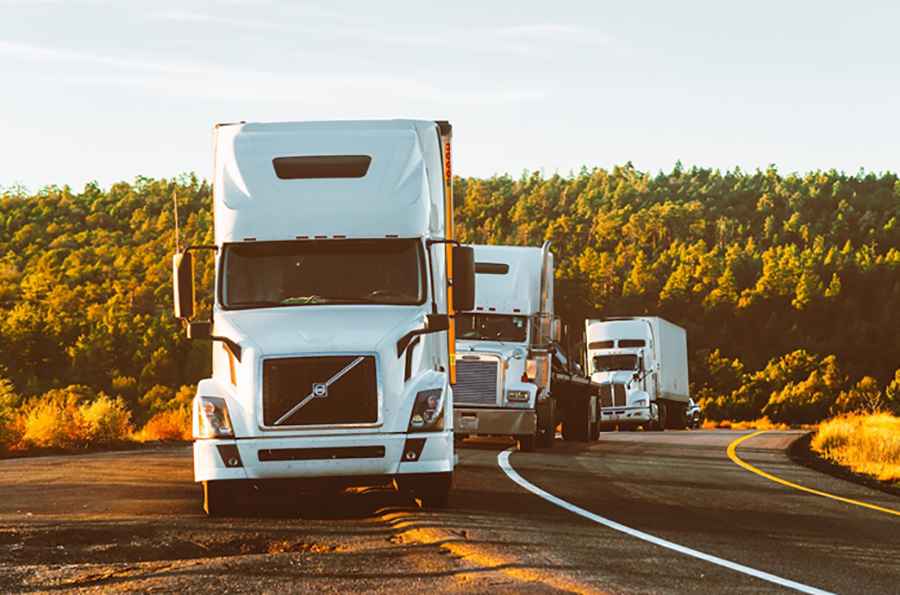The Characteristics of a Truck That Make It a Dangerous Vehicle to Share the Road with
You've probably heard the statistics: Truck accidents are a major cause of injuries and fatalities on our roads. But have you ever wondered why? When we talk about truck accident injuries, we’re not just talking about bumps and bruises. We’re talking about life-changing conditions, or in worst-case scenarios, even death. Trucks, with their massive weight and size, bring a unique set of challenges and risks that most of us in our smaller vehicles don’t always think about. But it’s something we should be aware of, especially when a simple trip to the grocery store could put you in close quarters with one of these road beasts.

So, here are the characteristics of a truck that make them dangerous to share the road with:
Their Size and Weight
Trucks are huge. These are vehicles that can weigh up to 80,000 pounds when fully loaded. To put that in perspective, that’s like having 30 average-sized cars stacked on top of each other. Because they’re so heavy, trucks need a lot more time and distance to come to a complete stop. If you’re driving behind a truck, you might notice it taking longer to brake compared to your car. This is why you should always give trucks plenty of space.
Their Blind Spots
Trucks have some really big blind spots. These are areas around the truck where the driver can’t see other vehicles. If you’re driving next to a truck or directly behind it, there’s a good chance the truck driver might not see you. These blind spots are way larger than what you have in your car. When you’re next to a truck, make sure you’re visible. Don’t hang out in their blind spots, because if the truck driver starts to change lanes, you might not be seen. It’s just like hide and seek, except you don’t want to be the one hiding in a spot where the truck driver can’t see you. If you need to pass a truck, do it quickly and safely, and make sure you’re not lingering in those tricky spots.
Their Turning Radius
You must have noticed how trucks seem to take up half the street when they turn. It's not just because they're big; it's because they need a lot more space to turn around than smaller vehicles. The reason for this is their turning radius. It's basically how much space a vehicle needs to make a complete circle. Trucks have a much larger turning radius than cars, meaning they need more room to make those turns, especially when they're turning right.
High Center of Gravity
Trucks have a high center of gravity. This means they’re more likely to tip over compared to smaller vehicles. The higher up the center of gravity, the less stable the vehicle is. This can become a real issue, especially if the truck is carrying a heavy or uneven load. If a truck takes a sharp turn or if there’s a sudden gust of wind, it might sway more than usual. It’s something to watch out for, especially if the truck seems to be moving a bit erratically. Give trucks extra space, and if you see one that looks like it’s struggling with balance, it’s best to stay clear of them completely.
Vulnerability to Weather Hazards
Sometimes, you might be driving down the road when the weather takes a turn for the worse all of a sudden. Maybe the rain starts pouring down, or maybe the wind picks up out of nowhere. For most of us in smaller cars, it’s already a challenge. Now, think about how much harder it is for a truck driver. The drivers of these trucks get to deal with challenges that you don’t even have to think about. Trucks are massive, and when the roads get wet or icy, it’s like trying to control a heavy, awkward beast. The brakes don’t work the same as they do on a small car, and the chances of skidding or sliding are way higher.
Braking Distance
Because trucks are so heavy, they need a lot more time and space to stop than cars do. If a car slams on the brakes, it might stop pretty quickly. But a truck? It takes a lot longer. This is especially important in situations like heavy traffic or sudden slowdowns. If you’re driving in front of a truck and traffic suddenly comes to a halt, there’s a good chance the truck won’t be able to stop in time.
Load Shifting
Driving a truck that is loaded to the brim is not as easy as it looks. it's like trying to ride a bike with a heavy backpack that keeps swinging from side to side. It's tough to control, and it can make the truck sway or even tip over. The loads can shift, especially if they’re not properly secured. Shifting loads can affect the truck’s stability and handling, making it harder for the driver to control the vehicle.